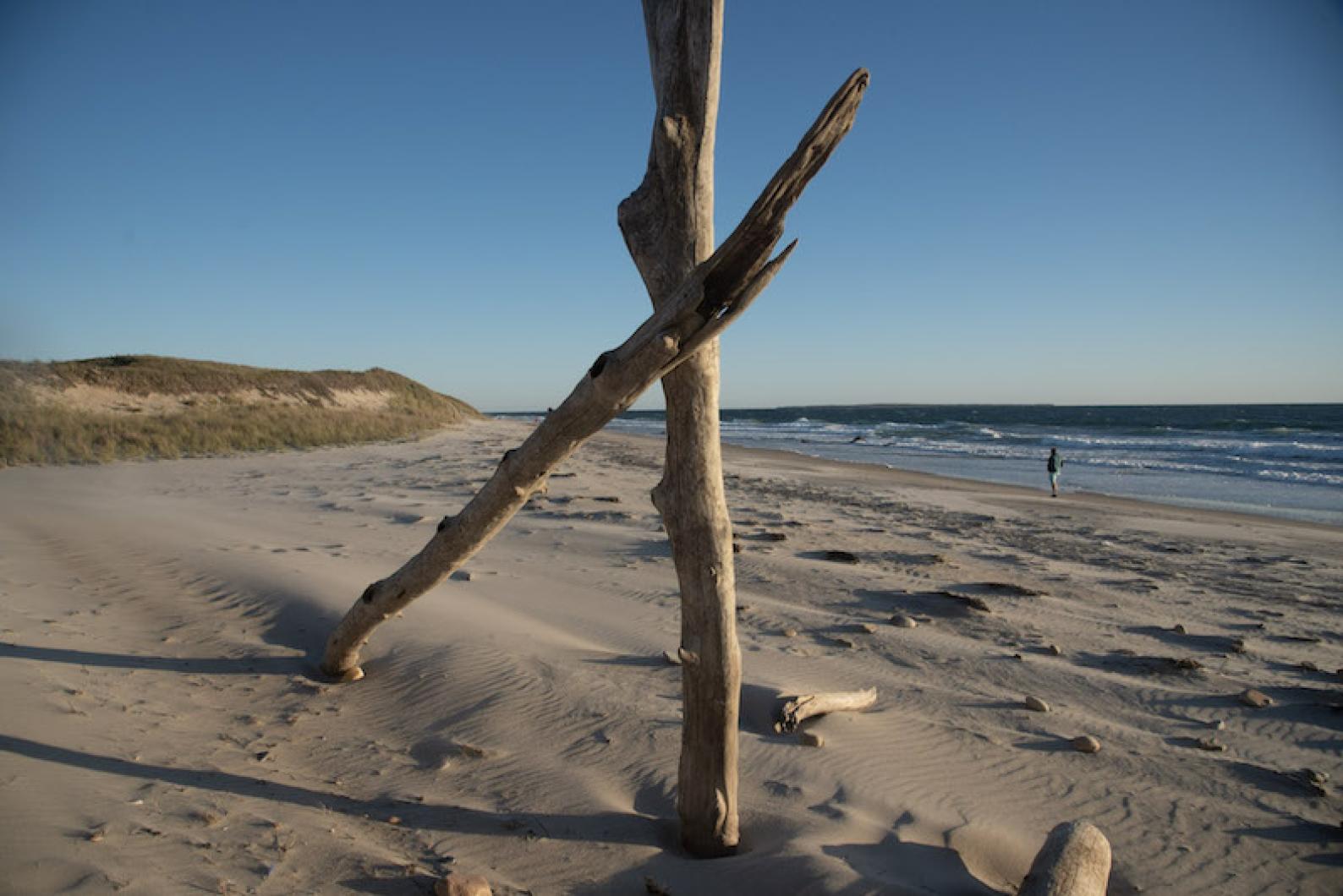A plague of lone star ticks. Pestilence in our ponds. Hunger. Homelessness. Drought. Even here, eight miles from America, the headlines are dire.
And yet.
In the midst of a pandemic, in the waning weeks of a fractious presidential race, with the West besieged by wildfire, the South menaced by hurricanes and unemployment rising nationwide, is there a better place to be than Martha’s Vineyard?
As warm days stretch into fall, this time of year feels idyllic. Derby fishermen dot the shorelines from Lobsterville to Chappaquiddick, silhouetted in the early morning and late afternoon light, providing fresh subject material for the many photographers and plein-air painters who live and visit here. Bay scalloping days are just beginning and will last at least through December, when the water in the Sound changes from turquoise to slate gray, roughed up by northeast winds that are the calling card of winter. There has been no killing frost yet, but after a summerlong drought, already leaves are falling by the rakeful, littering lawns and driveways.
New England asters and goldenrod are scant this year, another casualty of the drought. A friend wondered the other day about sea lavender — once seen in such abundance in the marshlands that ring coastal ponds around the Island — but not for some time.
The natural environment is changing everywhere, and the Vineyard is no exception. Farmers and gardeners, many of whom keep meticulous records, have documented the shifts. Ditto for the many longtime fishermen and mariners who have spent their lives reading the water.
The Island social environment is changing too, especially this year when all the previously well-demarcated seasonal lines are suddenly blurred by the pandemic.
If Memorial Day and Labor Day are the bookends of summer, then Columbus Day (a national holiday in critical need of a new namesake) is the unofficial start of the off-season. So far however, the usual exodus of seasonal residents has slowed. Traffic on the Island remains constant, with bikers jockeying with motorists for space. Beach parking lots are full, even as the ocean turns chilly. Lines form at the pharmacy and in the grocery stores, and the West Tisbury Farmers’ Market still draws a sizable crowd.
We know there are more people on the Island, even if we are not sure how many. Houses that once stood vacant after mainland schools reopened are alive with the sounds of kids and dogs. Adult children are holed up with their parents, working or studying remotely. Retirees who once went south when the weather began to cool are ordering heaters and stocking up on cord wood for the winter ahead.
How long these new-to-October residents will stay and how their presence will affect the Island economy is still to be seen.
Meanwhile, a distinctly different rhythm to the off-season looms this year.
Soon restaurants will be closing for the winter — or will they? Going out to dinner these days for the most part means takeout or eating outdoors, as Island restaurateurs continue to adapt while the pandemic stretches on. Deer hunting season has begun, and the many woodland walkers and bikers are urged caution and awareness on land bank and other conservation trails from now until the end of the year. Days are shortening rapidly, and while the inky night sky untainted by urban lights is an inspiration all its own, the blanket of darkness that will soon descend before suppertime can deepen the sense of isolation that comes with living on an Island. The off-season carries added perils for people who struggle with mental health and substance abuse problems. With no community suppers, no potluck music jams, even no committee meetings except by Zoom, the social problems are likely to be heightened this year.
We welcome our new neighbors to the off season and hope they join the community conversation, as the Island navigates these entirely uncharted waters.
For now the question hangs in the air: what happened to the sea lavender?




Comments (2)
Comments
Comment policy »